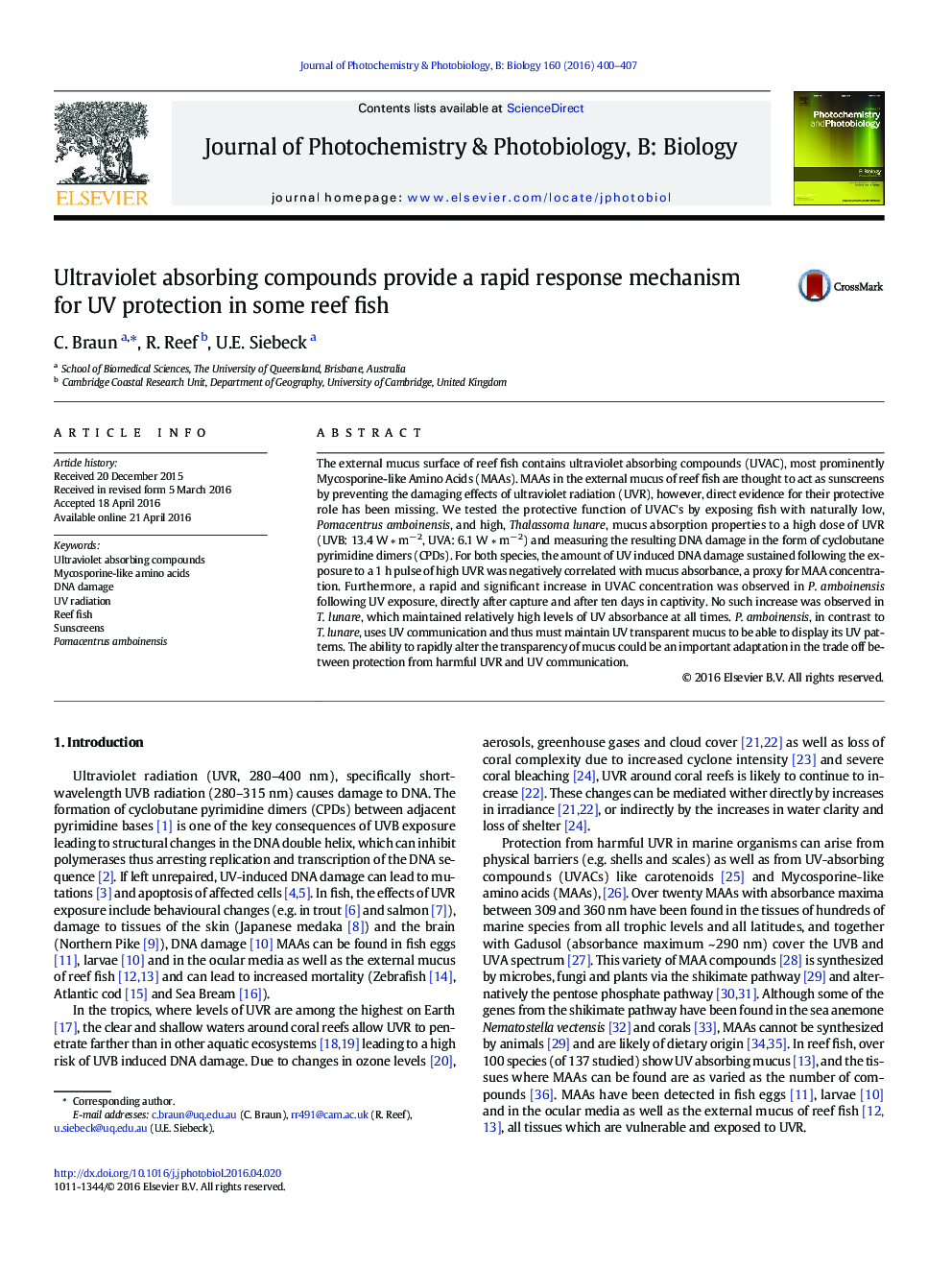| کد مقاله | کد نشریه | سال انتشار | مقاله انگلیسی | نسخه تمام متن |
|---|---|---|---|---|
| 29603 | 44422 | 2016 | 8 صفحه PDF | دانلود رایگان |

• Ultraviolet absorbing compounds (UVACs) and MAAs have been dubbed nature's sunscreens.
• The efficiency of MAAs to protect against UV induced DNA damage is yet unknown.
• We induced DNA damage in reef fish with variable UVACs in their external mucus.
• Fish with more sunscreens in their mucus had less DNA damage in skin samples.
• An increase in mucus absorption when exposed to UV radiation was observed in one species.
The external mucus surface of reef fish contains ultraviolet absorbing compounds (UVAC), most prominently Mycosporine-like Amino Acids (MAAs). MAAs in the external mucus of reef fish are thought to act as sunscreens by preventing the damaging effects of ultraviolet radiation (UVR), however, direct evidence for their protective role has been missing. We tested the protective function of UVAC's by exposing fish with naturally low, Pomacentrus amboinensis, and high, Thalassoma lunare, mucus absorption properties to a high dose of UVR (UVB: 13.4 W ∗ m− 2, UVA: 6.1 W ∗ m− 2) and measuring the resulting DNA damage in the form of cyclobutane pyrimidine dimers (CPDs). For both species, the amount of UV induced DNA damage sustained following the exposure to a 1 h pulse of high UVR was negatively correlated with mucus absorbance, a proxy for MAA concentration. Furthermore, a rapid and significant increase in UVAC concentration was observed in P. amboinensis following UV exposure, directly after capture and after ten days in captivity. No such increase was observed in T. lunare, which maintained relatively high levels of UV absorbance at all times. P. amboinensis, in contrast to T. lunare, uses UV communication and thus must maintain UV transparent mucus to be able to display its UV patterns. The ability to rapidly alter the transparency of mucus could be an important adaptation in the trade off between protection from harmful UVR and UV communication.
Figure optionsDownload as PowerPoint slide
Journal: Journal of Photochemistry and Photobiology B: Biology - Volume 160, July 2016, Pages 400–407